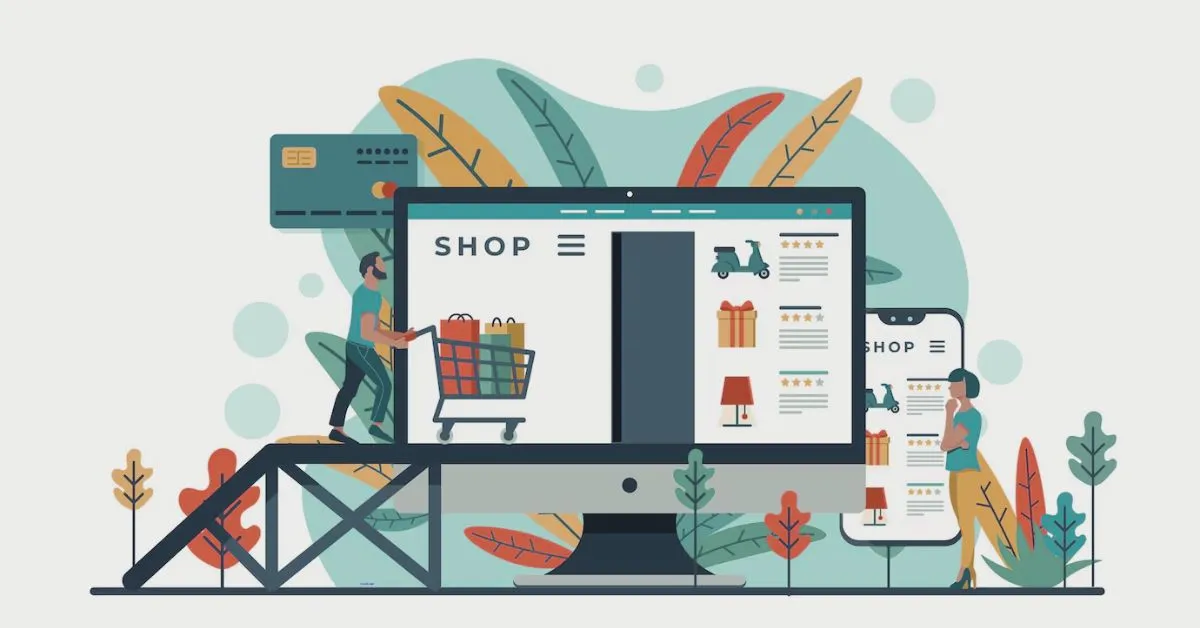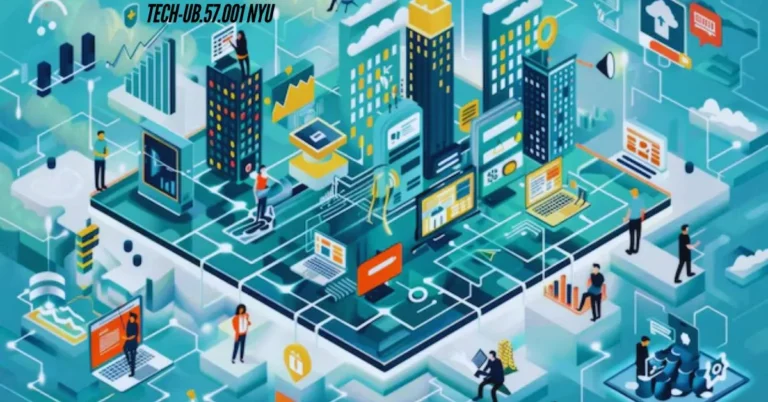Web&Store Model is Shaping the Future of Business
In the modern retail landscape, the lines between online and offline shopping are increasingly blurred. The “Web&Store” model has emerged as a powerful strategy for businesses aiming to create a seamless customer experience that integrates both online and brick-and-mortar channels. This approach goes beyond just having an online presence for your physical store; it’s about building a unified ecosystem where online and offline interactions complement each other, driving sales and building customer loyalty.
In this article, we will explore the Web&Store model in-depth, covering its definition, importance, benefits, implementation strategies, challenges, and best practices. Whether you are a small retailer looking to step into the digital world or an established brand looking to refine your omnichannel strategy, this guide will provide valuable insights to help you succeed.
What is the Web&Store Model?
The Web&Store model represents the convergence of the online and offline retail worlds. It is a strategy where businesses operate both a physical retail store and an online presence, creating a seamless and integrated customer journey across these two channels. Consumers today expect flexibility in how and where they shop. Some may prefer to browse online and buy in-store, while others may research products in-store and make a purchase online.
Unlike the traditional “brick-and-click” model, where a business merely has an online store in addition to its physical location, the Web&Store model focuses on creating a holistic customer experience that bridges the gap between the two worlds.
This model recognizes that consumers no longer operate in siloed environments—they are “omnichannel” shoppers who interact with brands across multiple touchpoints. Whether they are browsing from their smartphones, engaging with a social media ad, or visiting a physical store, they expect consistency, ease, and a personalized experience.
Why is the Web&Store Model Important?
The Web&Store model is crucial for several reasons, all of which are linked to the ever-evolving behavior of today’s consumers and the rapidly changing retail environment. Let’s explore some of the reasons why adopting this strategy is essential for any business in today’s market.
Changing Consumer Behavior
Consumer behavior has shifted significantly in recent years. More than ever, shoppers are conducting extensive research online before visiting a physical store, and they are also more likely to browse in-store before purchasing products online. This hybrid approach demands a strategy that caters to both behaviors and integrates the experiences across multiple channels.
By implementing the Web&Store model, businesses can capitalize on this behavior, offering customers the flexibility to shop the way they prefer.
Increased Reach and Brand Visibility
One of the main benefits of a robust online presence is the ability to expand your reach beyond your local area. Having a website or e-commerce platform can help attract customers who might not have otherwise discovered your brick-and-mortar store. With online platforms, your brand can go global, and your physical store can serve as a local hub for loyal customers.
Enhancing the Customer Experience
The Web&Store model enables you to offer a truly enriched customer experience. For example, businesses can offer services such as click-and-collect, where customers can shop online and pick up their purchases in-store. In addition, integrating the online and offline channels allows for easy returns and exchanges for online purchases in physical stores, enhancing convenience for customers.
Gaining a Competitive Advantage
In today’s competitive retail environment, standing out is critical. While many businesses still operate within the confines of a single channel, the Web&Store model gives you a distinct advantage by delivering a seamless, integrated experience. By doing so, businesses can attract a broader customer base and build lasting relationships.
Better Data Collection and Insights
The Web&Store model allows businesses to collect valuable data from both their online and offline channels. By integrating these two sources of data, businesses can gain a more holistic view of their customers. This comprehensive data can then be used to personalize marketing campaigns, optimize inventory management, and make more informed business decisions.
Increased Sales and Revenue
By providing customers with a variety of ways to shop and engage with your brand, the Web&Store model can help drive sales and ultimately increase revenue. For instance, a compelling online presence can drive foot traffic to your physical store, and in turn, foot traffic in-store can encourage customers to make purchases online.
Benefits of the Web&Store Strategy
When implemented effectively, the Web&Store strategy offers several advantages that can improve business performance. Let’s look at the key benefits of adopting this approach:
Improved Customer Engagement
One of the most significant benefits of the Web&Store model is improved customer engagement. By offering multiple channels for interaction, businesses can engage customers in the ways that best suit their preferences. Whether it’s through personalized recommendations, loyalty programs, or responsive customer service, businesses can keep customers coming back for more.
Increased Customer Loyalty
Providing a seamless, convenient shopping experience across channels fosters customer loyalty. Customers who can easily browse products, make purchases, and return items using their preferred method (whether online or in-store) are more likely to return to your brand in the future.
Greater Inventory Management
A key advantage of integrating online and offline sales channels is the ability to manage inventory more efficiently. With a unified system, businesses can track stock levels in real-time, preventing stockouts or overstocking issues. This level of visibility allows for better purchasing decisions and smoother operations.
More Effective Marketing Campaigns
Data from both online and offline channels provides valuable insights into customer behavior, enabling businesses to create targeted marketing campaigns. Businesses can segment customers based on purchasing history, browsing behavior, and location, delivering personalized messages and promotions to different segments.
Driving Foot Traffic to Physical Stores
While an online presence can expand your reach, a physical store still holds the potential to generate valuable foot traffic. By promoting online offers, in-store events, or location-based discounts through your website and social media channels, you can entice customers to visit your store, leading to higher in-store sales.
Business Resilience
With a Web&Store strategy in place, businesses become more resilient to economic shifts or unforeseen disruptions. In times of difficulty, one channel can serve as a buffer for the other, helping maintain revenue and customer engagement across different circumstances.
Overcoming the Challenges of Web&Store
While the benefits of the Web&Store model are substantial, businesses must also be prepared to address several challenges in its implementation. Let’s examine the main hurdles retailers face when adopting this strategy:
Inventory Management Complexity
Managing inventory across multiple channels can be challenging. Businesses need to ensure that stock levels are updated in real-time, so customers don’t face stockouts online or in-store. A robust inventory management system is essential for synchronizing stock and avoiding discrepancies.
Integrating Data Across Channels
Integrating data from online and offline sources can be complex. This requires the use of advanced software and systems that can synchronize information across both platforms. The goal is to ensure that customer data is consistent and accessible for decision-making.
Customer Service Consistency
Providing a consistent customer service experience across channels is critical. Training employees to handle inquiries and issues from both online and offline customers is essential. Additionally, your customer service policies should be aligned across both channels to ensure a smooth and consistent experience.
Logistics and Fulfillment
Managing logistics and fulfillment across both channels can be difficult. Businesses need to develop efficient systems to ensure timely delivery for online orders and provide a smooth in-store pickup process. Balancing the demands of both channels requires careful planning.
Technology Investment
The Web&Store model necessitates significant technological investment. Businesses will need to implement systems for e-commerce, point-of-sale (POS) transactions, inventory management, and customer relationship management (CRM). These technologies need to integrate seamlessly to offer a unified experience for both customers and employees.
Employee Training
Staff need to be trained to work with the technology and processes associated with the Web&Store strategy. They must understand how the two channels are interconnected and how to deliver a consistent customer experience, both online and in-store.
Key Strategies for Web&Store Success
To successfully implement a Web&Store strategy, businesses need to adopt the following strategies:
Develop a Clear Omnichannel Strategy
Start by defining your business goals, target audience, and key performance indicators (KPIs). Determine how your online and offline channels will work together to meet these objectives and create a cohesive, integrated experience for customers.
Invest in Integrated Technology
Select technology solutions that can seamlessly integrate your online and offline operations. Choose e-commerce platforms, POS systems, inventory management software, and CRM tools that will streamline your processes and provide the necessary insights to make data-driven decisions.
Optimize for Mobile Devices
Given the rise of mobile shopping, ensure that your website is optimized for mobile devices. This will make it easier for customers to browse products, make purchases, and interact with your brand while on the go.
Offer Flexible Shopping Options
Allow customers to shop online and pick up their purchases in-store (click-and-collect), or offer in-store returns for online purchases. These options provide flexibility and convenience, encouraging customers to engage with both channels.
Personalize the Customer Experience
Use data collected from both online and offline interactions to personalize the customer experience. Offer tailored recommendations, promotions, and rewards based on individual preferences, increasing customer satisfaction and loyalty.
Best Practices for Maximizing Web&Store Success
To ensure the success of your Web&Store strategy, consider these best practices:
- Prioritize the customer experience: Make it easy, enjoyable, and convenient for customers to interact with your brand across all touchpoints.
- Ensure consistent branding: Your brand message, design, and voice should be uniform across all channels.
- Leverage technology: Use the right tools to streamline operations and provide a seamless experience.
- Adapt to change: Be flexible and ready to adjust your strategy based on changing customer needs and market trends.
Conclusion:
The future of retail lies in seamlessly integrating online and offline shopping experiences. The Web&Store model offers businesses a powerful way to connect with customers, increase sales, and build lasting loyalty. By understanding the benefits, addressing the challenges, and implementing effective strategies, businesses can thrive in an increasingly interconnected world.
The key to success in the Web&Store world is adaptability and a deep focus on customer experience. If you can meet your customers where they are—whether they’re browsing online or shopping in-store—you’ll be well-positioned to succeed in the retail landscape of tomorrow.







